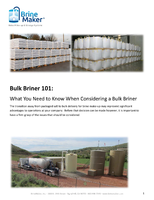Longtime User of VLF Platesetters Switches to PlateRite Ultima Series and Trueflow Workflow
ROLLING MEADOWS, Ill. -- Three key factors in recent years have been cited as driving demand for very large-format (VLF) computer-to-plate (CTP) recorders: the markets for large-format sheetfed and web presses, the need for faster plate delivery as run lengths shrink and the growing number of commercial printers branching out into carton and label work.
Lithotone Inc. in Elkhart, Ind., has been ahead of this curve for a while.
"We were one of the first printing companies to get into CTP and one of the first to adopt the VLF format for producing plates," recalled Eric Delio, prepress manager.
In an environment once defined by users with a need for big plates, Lithotone has imaged all of its plates, large and small, on VLF platesetters for more than 10 years. The printer recently upgraded a prepress department that was already well equipped in order to accommodate the rapidly increasing plate requirements for its sheetfed and web presses.
Lithotone chose a Screen PlateRite Ultima 32000 to replace an existing Trendsetter 4557. The company also installed Screen's Trueflow 3 PDF/JDF-based workflow.
"We had been happy with the previous VLF system and digital front end," Delio said. "But once we saw the capabilities of the PlateRite Ultima and the speed of the Screen prepress workflow, we decided to investigate a whole new workflow solution."
The PlateRite Ultima has a dual-feeding capability, which allows it to image two standard-size plates at a time. Lithotone's fully automated system with twin-head configuration can output up to 46 eight-up plates per hour. By comparison, the system it replaced produced eight plates per hour, a difference of 575 percent.
"It is an amazing machine," he said. "The system was stable from the moment it was installed. We needed to be able to keep up with plate demand, and the sheer speed of the Ultima 32000 has definitely helped increase throughput in prepress."
Established in 1962, Lithotone serves local, regional and national clients in the high-end wood products and fabrics industries. The company has approximately 50 employees.
In addition to complex color products, catalogs, brochures and publications, Lithotone prints box labels and litho-laminate. In litho-laminate, graphics are printed on SBS board, then laminated onto a corrugated box. The full-service firm provides complete bindery and fulfillment services.
Lithotone employs the PlateRite Ultima to produce upwards of 300 plates per day. The company uses LH-PJ plates. Plate output is split between the company's two half-size Hitachi web presses, a 40-inch Heidelberg Speedmaster XL 105 sheetfed press and a 51-inch Mitsubishi 5F sheetfed press.
"The Ultima 32000 handles the 19 1/3 x 23-inch plates used for printing literature on the Hitachi web presses," Delio said. "Running two plates at a time nonstop, it will output 60 to 70 plates an hour."
Lithotone's larger presses are workhorses when it comes to packaging-type applications. The platesetter's maximum plate size of 83.6 x 49.6 inches gives the printer capacity to spare in its plate production needs.
The fully automated configuration of the PlateRite Ultima 32000 at Lithotone permits unattended operation around the clock. The multiple-cassette autoloader features five cassettes. Each cassette is capable of holding a different plate size up to a maximum of 150 plates. Press-ready plates are transported from loading to imaging to online processing without operator intervention.
At the same time that Lithotone installed the PlateRite Ultima 32000, the printer incorporated Trueflow 3 into the production process for optimum speed and throughput.
"The processing speed is incredible," Delio said. "Whenever you switch applications, it takes some time getting used to the new system. Now that we are familiar with Trueflow, it is amazing how fast we can move files through the system, especially with standard layouts and templates. It is four to five times faster than our previous workflow application."
The pressroom benefits from the greater flexibility of automated plate production.
"Press operators can call for their own plates if need be," Delio said. "The plates aren't sitting around until they are needed, and there doesn't have to be someone in prepress running the system at night. If a decision is made at the last minute to switch a job from the 40-inch press onto the 51-inch press, press operators can handle the change without loss of production time. Just in terms of improved efficiency, the impact on pressroom operations has been wonderful."
About Screen (USA)
Screen (USA), a wholly owned subsidiary of Kyoto, Japan-based Dainippon Screen Manufacturing Co., Ltd., is a leading supplier of systems and components for the graphic arts industry. From its centrally located headquarters facility outside Chicago, Screen (USA) provides complete sales, parts and service through sales representatives and dealer networks in principal geographic areas. Its diverse line of integrated products includes workflow management solutions, thermal platesetters, imagesetters, digital printing systems, flatbed scanners, hybrid AM/FM screening technology, color proofing applications and digital asset management software. Screen technology benefits commercial printers, packaging printers, newspaper publishers, trade shops, in-plants and service bureaus in every state, plus Canada and all of Latin America.
Information Contact:
Ralph Abdelhak
rabdelhak@screenusa.com
(847) 870-7400 ext. 2249




